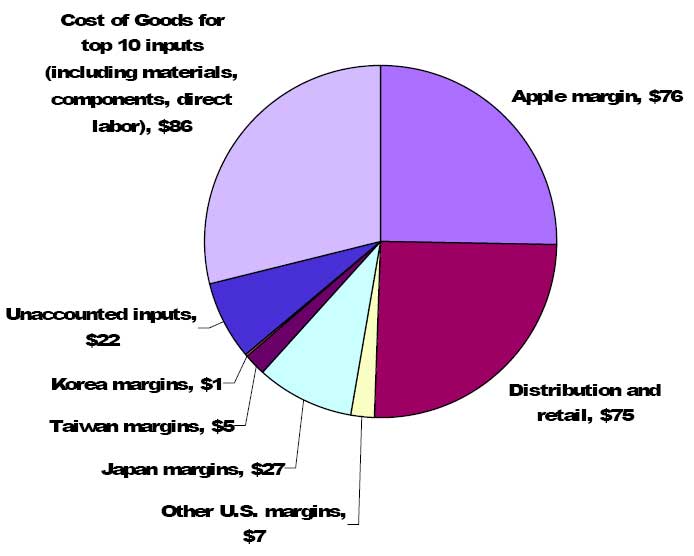Andy Lippman pointed me to the work of the Personal Computing Industry Center at UC Irvine and specifically to some papers that analyze the global economic impact of the computer industry. In “Who Captures Value in a Global Innovation System? The case of Apple’s iPod (pdf)” the authors analyze how the profit from a single gadget is shared by several countries (see chart above). While the high-value work is concentrated in the US (and $76 profit on the sale of a $399 iPod), some profits also end up in Japan ($27), Taiwan ($5) and Korea ($1). A quarter of overall profits ($76) end up in retail and distribution, often in the country where the iPod is sold (half the time, in the US).
Breaking down a device to trace the origins of its nuts and bolts is something I’ve always been fond of, but this analysis reveals some of the shortcomings of this method. Where is the real wealth ending up? Certainly Apple shares have appreciated well beyond the profit per device, and shareholders – presumably in the US – come out ahead. And what about the content – ripped CDs, mp3s and videos? Many production companies are based in the US as well. While more difficult to quantify, it would be interesting to understand where the real profit goes over the life of the consumer – not just the life of the product. This might give a better understanding of profit distribution as compared with cultural influence. While $33 of each iPod goes to other countries, all the glory goes to Apple.
